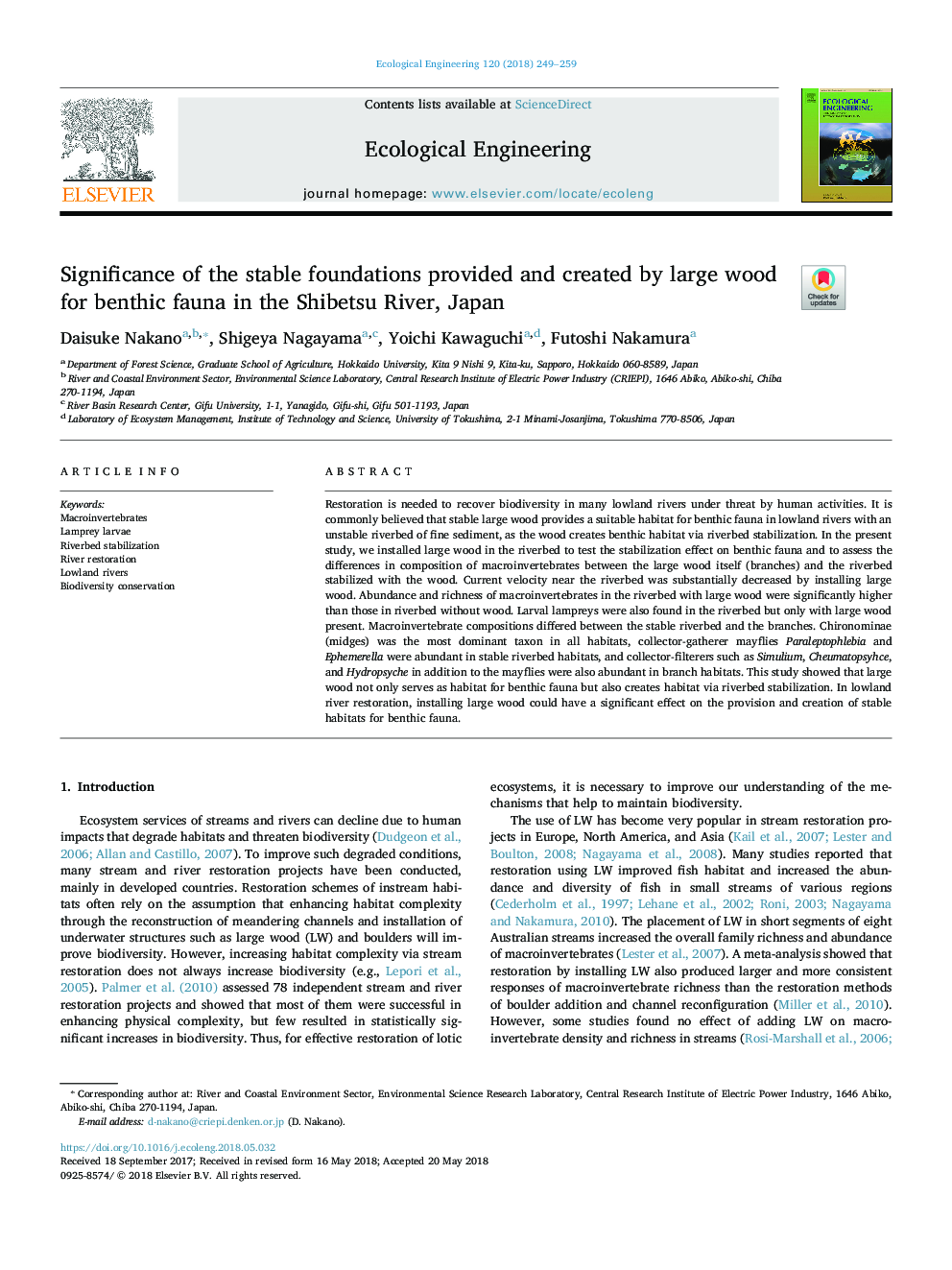| Article ID | Journal | Published Year | Pages | File Type |
|---|---|---|---|---|
| 8847796 | Ecological Engineering | 2018 | 11 Pages |
Abstract
Restoration is needed to recover biodiversity in many lowland rivers under threat by human activities. It is commonly believed that stable large wood provides a suitable habitat for benthic fauna in lowland rivers with an unstable riverbed of fine sediment, as the wood creates benthic habitat via riverbed stabilization. In the present study, we installed large wood in the riverbed to test the stabilization effect on benthic fauna and to assess the differences in composition of macroinvertebrates between the large wood itself (branches) and the riverbed stabilized with the wood. Current velocity near the riverbed was substantially decreased by installing large wood. Abundance and richness of macroinvertebrates in the riverbed with large wood were significantly higher than those in riverbed without wood. Larval lampreys were also found in the riverbed but only with large wood present. Macroinvertebrate compositions differed between the stable riverbed and the branches. Chironominae (midges) was the most dominant taxon in all habitats, collector-gatherer mayflies Paraleptophlebia and Ephemerella were abundant in stable riverbed habitats, and collector-filterers such as Simulium, Cheumatopsyhce, and Hydropsyche in addition to the mayflies were also abundant in branch habitats. This study showed that large wood not only serves as habitat for benthic fauna but also creates habitat via riverbed stabilization. In lowland river restoration, installing large wood could have a significant effect on the provision and creation of stable habitats for benthic fauna.
Related Topics
Life Sciences
Agricultural and Biological Sciences
Ecology, Evolution, Behavior and Systematics
Authors
Daisuke Nakano, Shigeya Nagayama, Yoichi Kawaguchi, Futoshi Nakamura,
